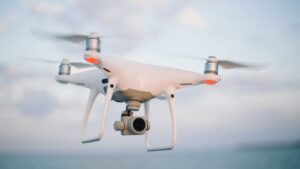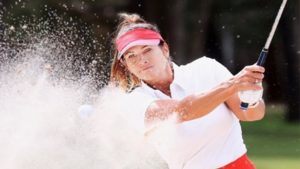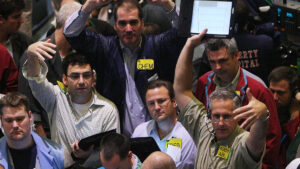Sportcor raises capital to fund the rollout of its in-game SmartBall technology

Sportcor uses electronic monitoring technology that's encased in a protective silicon layer, which can be implanted into balls and other sporting equipment. (Source: Supplied)
“I still see five or six deals a week come across my desk, but I haven’t seen anything like this.”
That’s the view of new Sportcor CEO Anthony Owen, who’s excited about the company’s prospects after a 20+ year career in Australia’s tech scene.
Company founder Ben Tattersfield initially conceived the idea — implanted ball-tracking technology — as a way to track wayward golf balls.
It’s certainly an appealing concept to anyone who’s sprayed one off the tee. But he soon found the tech was difficult to apply to golf, where the ball compresses significantly on impact.
Instead, the company set about establishing proof-of-concept SmartBall with cricket manufacturer Kookaburra, which it debuted at this year’s Ashes series in England.
Tattersfield remains involved with the business as Head of Innovation. And after making an investment in Sportcor last year, Owen recently came on board as CEO to help drive the company’s commercialisation strategy.
While other smart-ball technologies exist in the world of sport, they rely on external sensors for recharging, Owen said. Sportcor’s patented silicon layer allows its tracking sensor to be installed inside the ball, and recharged using bluetooth.
To test it, the team at Kookaburra sent the Smartball into a wall 300 times at 150kph, to simulate a 50-over one-day match. After taking the ball apart, “everything was intact”, Owen said.
Sportcor will have the first commercial rollout for its Kookaburra SmartBalls in early December. The company is also setting up to roll out its technology for other ball sports including netball and rugby, as well as in-game equipment such as helmets.
Three-pronged approach
Owen told Stockhead Sportcor will focus on three core channels — broadcast TV networks, sporting academies, clubs and schools, and retail outlets.
For broadcasters, he said the tech is monetisable by providing an efficient way to provide more data insights to viewers.
Cricket watchers would be familiar with the speedometer, which measures the pace of a bowler’s delivery. But Owen said the existing tech — a stationary radar — can be inaccurate as it doesn’t account for differences in height of the release point.
Along with improved speed metrics, the in-ball tech can also measure spin revolutions and speed of the ball off the bat.
The SmartBall has been piloted by Queensland Heat BBL side, and Owen also wants to execute on a commercial opportunity across a domestic and global network for clubs and schools.
Ultimately, “we’re a software company”, he said. “So when customers buy a SmartBall, they need to download Sportcor’s app to measure the data. The model is based on a monthly fee for access to that software.”
Raising capital
To finance its next phase of growth, Sportcor is looking to source additional funding of between $300,000 and $700,000 via the OnMarket platform.
The company is offering a convertible note structure that closes on October 31, making investors eligible for a 20 per cent discount on the next capital raise planned for November.
Owen said the funds will be applied towards building out a “complete end-to-end product”.
“One of the things I looked at first in the role was addressing some gaps in the business. So I’ve hired a CFO and boosted our sales & marketing headcount,” he said.
Around half of the capital raised will also go towards hardware and software costs, starting with a front-loaded order for the company’s electronics inventory.
“We also needed a more robust software component for schools and clubs,” Owen said. “For example, take a head coach at school who wants to break down the data by team and age — they need an entire dashboard to do that efficiently, so we have to build out that.”
For now, the company is continuing to establish its footprint across different markets.
“We are talking with many sporting good manufacturers,” Owen said. “And we’re working with Madison — they’ve just developed a piece of concussion headwear that absorbs more impact, and they’ve approached us to insert our electronics into that headgear to get data on different types of head collisions.”
UNLOCK INSIGHTS
Discover the untold stories of emerging ASX stocks.
Daily news and expert analysis, it's free to subscribe.
By proceeding, you confirm you understand that we handle personal information in accordance with our Privacy Policy.








